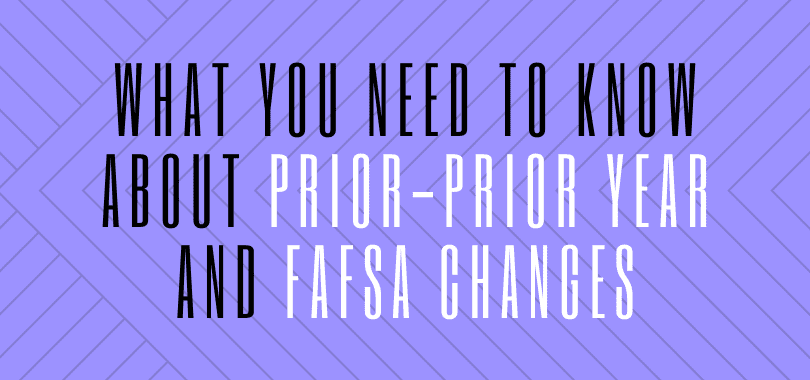
Source: Flickr user jose_kevo.
The federal government has come up with a wonderfully confusing new name for something that actually simplifies the financial aid process.
Let me try to make it easier to understand.
Historically, students and parents have used income information from the last full calendar year on financial aid applications (FAFSA). In other words, you used the prior year’s income information in order to apply for financial aid (e.g., if you plan to enroll in fall of 2016, you’ll need to use income information from 2015 to complete the FAFSA).
Why the switch to prior-prior year
While relatively easy to understand, this has had some drawbacks for students and parents.
Using the prior year’s income info means you cannot apply for financial aid until January 1 of the year the student will start college because you need to have a full picture of the prior year’s income before filling out the FAFSA.
This late timing makes planning difficult.
And, of course, just because you file your aid application in January or February doesn’t mean you will instantly have a financial aid package prepared by all of the colleges on your list. It could easily be until sometime in April that you have all of your aid packages in hand to be able to review and compare them.
This means that the entire process of applying for, receiving, and comparing financial aid has been traditionally pushed back to the very last minute. It puts a lot of undue stress and pressure on students and parents.
How prior-prior year will help
For years, colleges have been telling prospective students not to rule out a college based on the price tag, but it still takes far too long to find out what a school might actually cost you. In an effort to combat these issues, the government has now made a ruling to help expedite this process. Instead of using your prior year’s income and tax info, you can now use the “prior-prior year’s” information, in other words, info from two years ago.
This means that you will be able to apply for aid earlier and get the results back sooner, thus giving you and your family more time to make an educated decision.
Prior-prior year in action
This change will go into effect starting in fall 2016 for students who are currently high school juniors or those seeking financial aid for the 2017-18 academic year. You will likely be able to apply for aid in the fall, though deadlines have yet to be released.
Under this approach, students would not have to wait until January 1 of their senior year to complete the FAFSA. Instead, students could apply for financial aid in the fall of their senior year when they apply for admission using income information from their most-recently completed tax return.
This would mean a student applying for admission for fall 2017 would be using parental income data from 2015.
Proponents argue that receiving aid packages earlier in their senior year would provide admitted students with more transparency about cost and give them more time to compare costs across colleges.
This is a move in the right direction of helping families determine what college will really cost them, beyond just the sticker price. If you still don’t want to wait this long, however, don’t forget that College Raptor’s match tool can help you estimate the net price of the colleges of your choice as early as you want.


